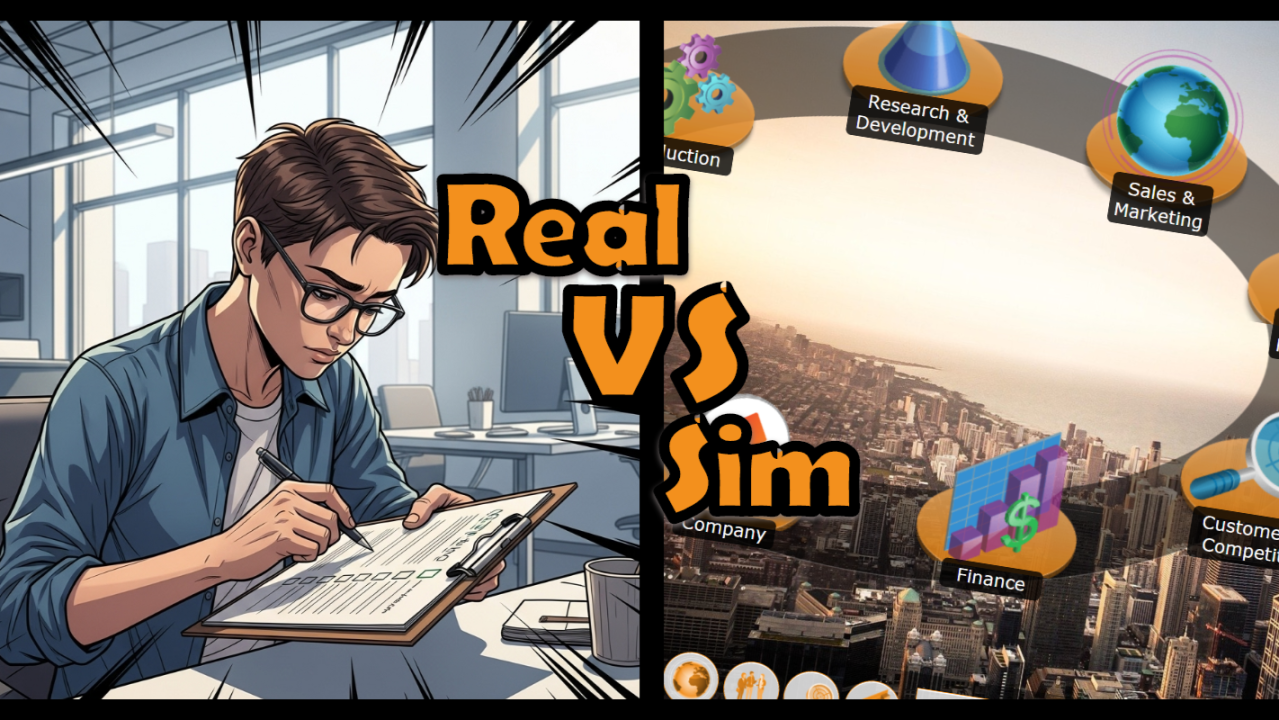
Real-World Projects Versus Simulation-Based Learning
In my work introducing experiential learning to instructors around the world, I often encounter instructors who go the extra mile to give students real-world projects — consulting with local businesses, managing live initiatives, or solving actual organizational challenges.
These educators deserve tremendous credit — arranging, supervising, and assessing real engagements takes significant time, effort, and institutional support.
Yet I’ve also noticed that some of these same instructors, understandably proud of their real-world based approach, can be quick to dismiss simulation-based learning. Perhaps because they do not consider simulation to be “real”.
In my experience, however, the richest learning comes from combining real-world projects with realistic simulations. And if you can only choose one of these methodologies, simulation tends to win out most of the time.
Why Real-World Projects Fall Short
Logistical Burden: Securing partnerships, scheduling work, and handling approvals and liability can overwhelm an instructor’s capacity.
Unpredictable Value: Projects may shift scope, stall, or fail to expose students to key business functions.
Assessment Challenges: Performance depends on uncontrollable factors — client responsiveness, market shifts, and student mobility constraints.
Equity & Accessibility: Not every student can commute or navigate client-site protocols, and barriers may exclude those with disabilities.
Limited Exposure: Short-term projects rarely let students experience management-level decision making or the full cycle of strategy, execution, and review.
How Simulations Fill the Gaps
Broad Decision-Making: Simulations put students into decision-making roles, forcing them to weigh trade-offs across finance, operations, marketing, and HR.
Accelerated Cycles: Multiple weeks, months, and years of strategy and consequences can unfold in a single session. And learning can be reinforced through repetition.
Risk-Free Experimentation: Students test bold strategies — pricing changes, marketing blitzes, organizational pivots — without real-world fallout.
Automated, Consistent Assessment: Built-in dashboards track metrics for holistic, fair, and objective grading.
Scalability & Access: Thousands of students can participate simultaneously, anytime and anywhere, with minimal administrative overhead.
A Hybrid Path to Deeper Learning
Pre-Engagement Simulation – Build core skills in a controlled environment.
Live Client Project – Apply insights with authentic stakes and client feedback.
Post-Project Simulation – Revisit scenarios to test alternative strategies and compare with real outcomes.
By weaving simulations and real-world consulting together, instructors can offer students the best of both worlds: the authenticity of live projects and the management-level decision making, experimentation, and scalability of simulations.
This hybrid approach not only maximizes learning but also ensures every student, regardless of circumstance, can engage fully and confidently.
For simulation ideas, visit GoVenture.net
Receive this newsletter by email —
I'm Mathew Georghiou and I write about how games are transforming education and learning. I also share my experience as an entrepreneur inventing products and designing educational resources used by millions around the world. More about me at Georghiou.com